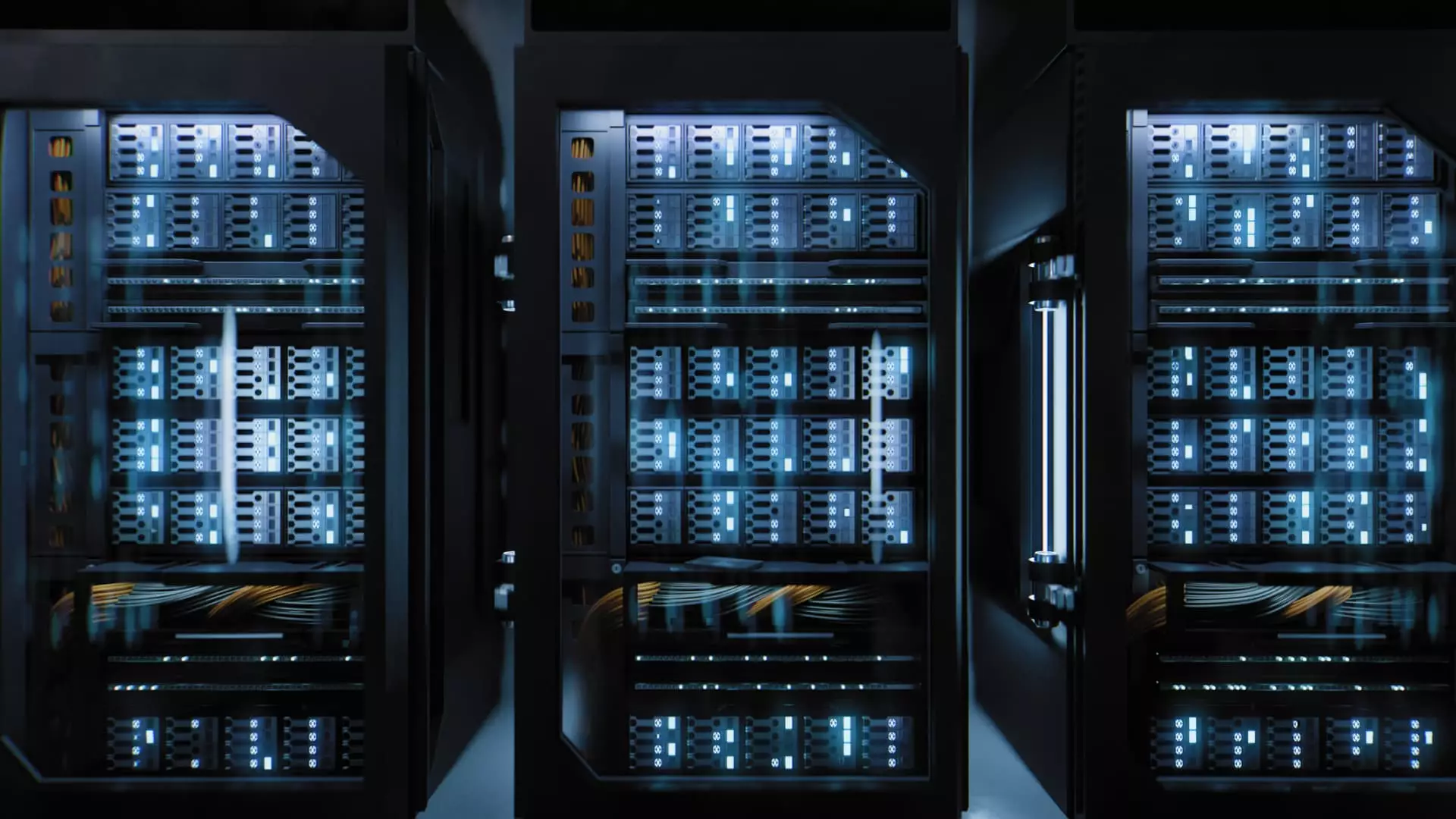The rapid expansion of artificial intelligence (AI) technology is forcing changes in how data centers operate, particularly in Europe. With organizations increasingly relying on powerful chips from leaders like Nvidia to drive AI innovation, the consequent surge in energy demand poses a significant challenge to Europe’s decarbonization efforts. While AI promises tremendous advancements across various sectors, the environmental footprint associated with its underlying data infrastructure calls for urgent attention and innovative solutions.
According to a report from Goldman Sachs, the demand for data centers is predicted to increase by a staggering 160% by 2030, primarily fueled by AI. This exponential growth is alarming, particularly in the context of the goals set forth by the European Union (EU) to significantly reduce overall energy consumption. The pressing concern is that the high-powered chips used for AI applications, notably graphics processing units (GPUs), are intensely energy-dependent and generate a considerable amount of heat. Such chips require advanced cooling solutions, typically involving lower water temperatures to ensure operational efficiency.
Andrey Korolenko, the chief product and infrastructure officer at Nebius, illustrated the gravity of the situation by stating that just one square meter of a data center can consume approximately 120 kilowatts of energy. To put this into perspective, this power requirement is comparable to what is needed to operate 15 to 25 homes simultaneously. As the need for these high-density computing systems grows, data centers must rethink their cooling strategies to accommodate both the environmental implications and operational necessities.
A crucial layer of complexity arises from the competitive landscape of AI technologies, where the United States currently holds the lead. Michael Winterson, chair of the European Data Center Association (EUDCA), emphasizes that the current “space race” for AI capabilities appears to downplay critical considerations surrounding land rights, energy access, and sustainability. He voiced concerns that previous advancements could be undone as European developers adapt their facilities to meet the demands for lower water temperatures without compromising their longstanding environmental commitments.
Herbert Radlinger, managing director at NDC-GARBE, echoed this apprehension, noting a disheartening shift in expectations. Initially, European engineers meant to pursue liquid cooling systems that support higher temperatures to enhance energy efficiency. However, pressure from U.S. chipmakers has led to calls for revisions, risking a return to less sustainable practices.
As Europe grapples with an impending energy crisis, the EU’s commitment to reducing energy consumption by 11.7% by 2030 is urgently tested. The EU had estimated a 28% increase in energy consumption for data centers by 2030, yet with the AI boom, these numbers could drastically escalate. Such projections raise the question of compatibility with the newly introduced Energy Efficiency Directive, which mandates greater transparency on data center power usage and overall environmental impact.
Schneider Electric, a key player in energy management, engages extensively with European regulators to explore solutions that enhance the sustainability of AI data centers. The dialogue has revolved around optimizing power sources and forging cooperative relationships with utility providers to ensure that advancements in AI technology do not come at the expense of environmental sustainability. As Steven Carlini from Schneider Electric pointed out, cooling is the second-largest energy consumer in data centers after the IT load. Hence, maintaining power usage effectiveness while accommodating new cooling requirements is imperative.
To address these challenges, companies like Equinix are increasingly discussing intelligence in design and energy efficiency with their clients. Ferhan Gunen, vice president of data center operations for Equinix in the U.K., indicated a demand from clients for more powerful, dense servers, pointing to a delicate balancing act between power needs and environmental considerations. As new technologies emerge, the path forward will necessitate a hybrid approach that integrates sustainability into the design and operation of data centers.
Efforts are underway to adopt liquid cooling systems—considered a more effective alternative for managing heat—although these adaptations may require substantial upfront modifications. The initial investment in these systems may appear costly, but they are expected to yield savings and increased efficiency in the long run. Even Nebius has indicated its commitment to investing in AI infrastructure in Europe, signaling a recognition of the importance of renewing technology to meet future demands.
As the urgency for sustainable solutions intensifies, collaboration across the sector will be essential. Data center operators must work closely with chip manufacturers, regulatory bodies, and energy suppliers to create a framework that supports both technological advancement and environmental conservation. The ongoing discussions among industry stakeholders reveal a notable shift toward recognizing that innovation and sustainability must coexist.
The dual pressures from AI advancements and environmental standards will define the future of Europe’s data center landscape. The industry faces a pivotal moment, wherein the decisions made today will shape not only the technological capabilities of tomorrow but also the sustainability of the environment that supports them. The interdisciplinary challenge has never been greater, but with the right mindset and collaboration, a balance between growth and responsibility is achievable.


Leave a Reply